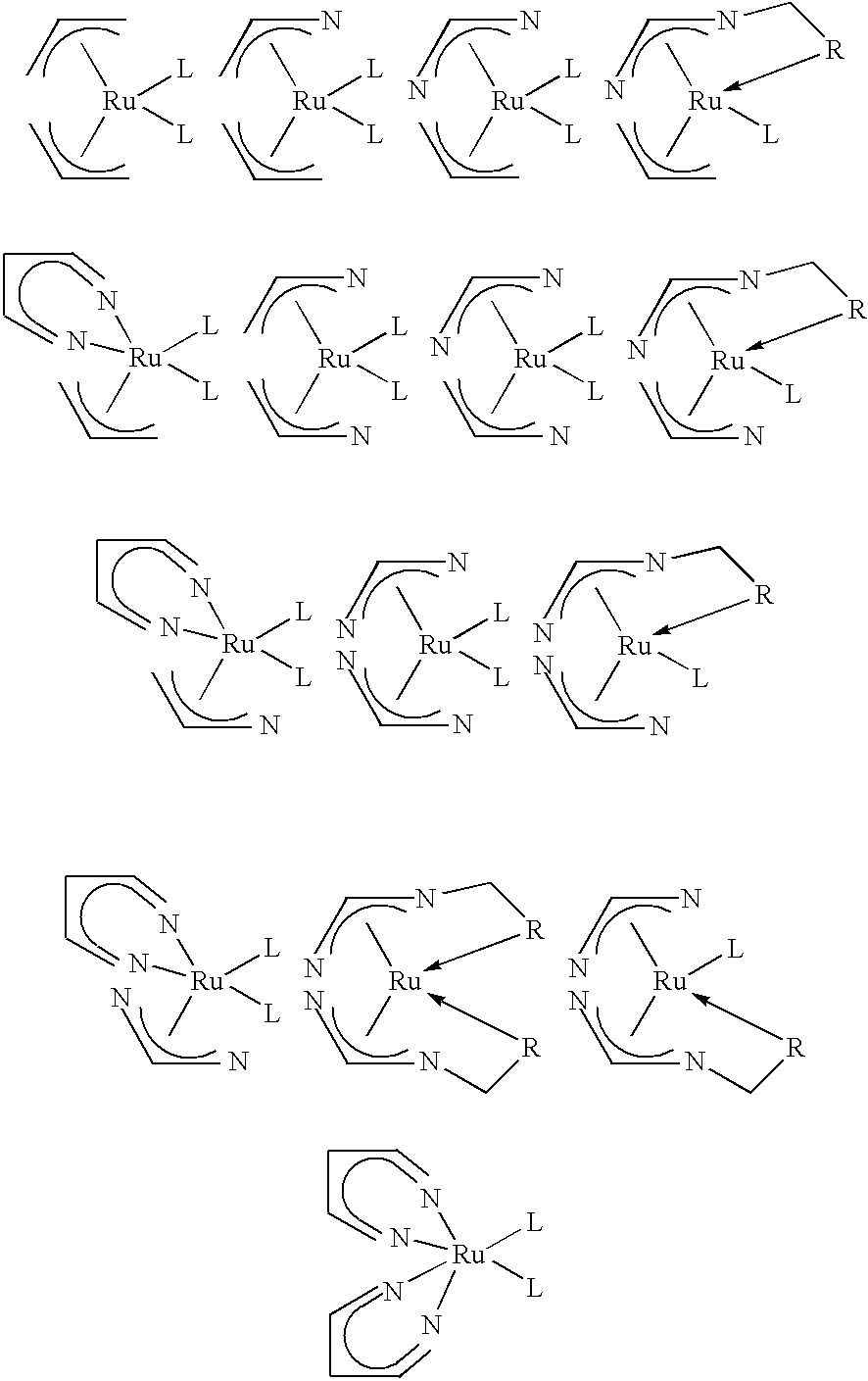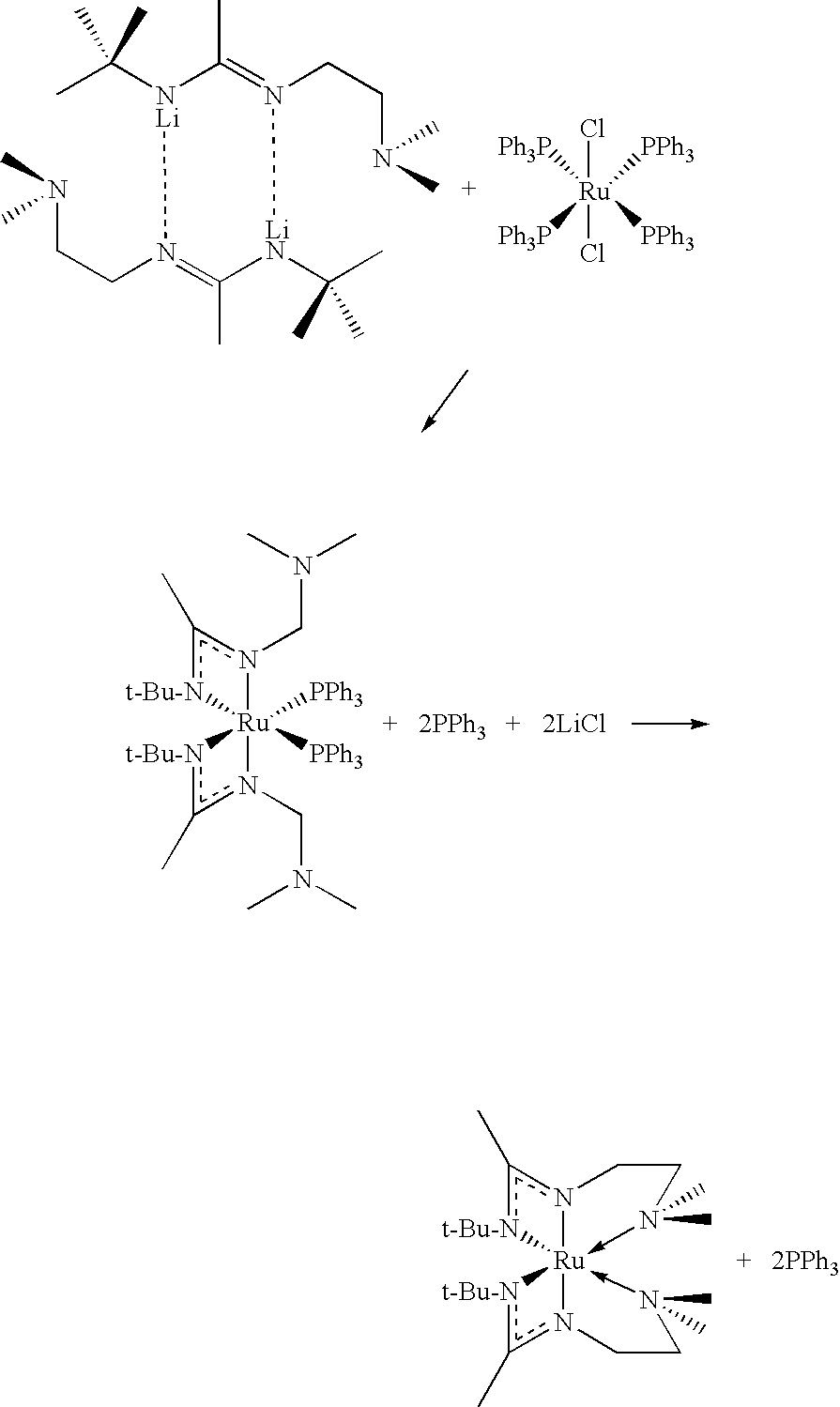Organometallic compounds, processes for the preparation thereof and methods of use thereof
a technology of organic compounds and processes, applied in the field of organic compounds, can solve the problems of low thermal stability, difficult to achieve high growth rates during film deposition, and complicate their processing, and achieve the effect of better reactivity with semiconductor substrates
- Summary
- Abstract
- Description
- Claims
- Application Information
AI Technical Summary
Benefits of technology
Problems solved by technology
Method used
Image
Examples
example 1
Synthesis of [Li{N(CMe3)C(Me)N(CH2)2NMe2}]2
[0175]The following manipulations are carried out using inert atmosphere techniques and under an atmosphere of N2. Acetonitrile (35 mmol) is added slowly (over about an hour) to a solution of LiN(tBu)(CH2)2NMe2 (35 mmol) in diethyl ether (60 milliliters) at 0° C. The mixture is then allowed to warm to room temperature and stirred overnight. Solvent is removed under reduced pressure and the residue is extracted with hexane (3×40 milliliters). This extract is then concentrated to approximately 25 milliliters and is cooled at −30° C. White crystals of [Li{N(CMe3)C(Me)N(CH2)2NMe2}]2 that are formed are then isolated by filtration.
example 2
Synthesis of Ru[N(CMe3)C(Me)N(CH2)2NMe2]2
[0176]The following manipulations are carried out using inert atmosphere techniques and under an atmosphere of nitrogen. A solution of [Li{N(CMe3)C(Me)N(CH2)2NMe2}]2 in tetrahydrofuran (THF) (15 mmol in 50 milliliters) is added slowly (over an hour) to a solution of Ru(PPh3)4Cl2 in THF (15 mmol in 50 milliliters) at −30° C. The reaction is stirred for 2 hours yielding a solution containing Ru[N(CMe3)C(Me)N(CH2)2NMe2]2(PPh3)2. Following the 2 hour stir at room temperature, the reaction is refluxed. The PPh3 group dissociates and the NMe2 moiety of the N(CMe3)C(Me)N(CH2)2NMe2 ligand coordinates datively to the metal center in the vacancy left by the departed PPh3 ligand. The solvent is then removed in vacuo and the residue is extracted with hexane (3×20 milliliters). This solution is concentrated to 5 milliliters and then triphenylphosphine is separated from the desired Ru[N(CMe3)C(Me)N(CH2)2NMe2]2 product by chromatography using a silica colu...
example 3
Variation on synthesis of Ru[N(CMe3)C(Me)N(CH2)2NMe2]2
[0177]The method in Example 2 is carried out with the exception that 7.5 mmol of [Ru(CO)3Cl2]2 are used in the place of 15 mmol of Ru(PPh3)4Cl2.
PUM
| Property | Measurement | Unit |
|---|---|---|
| Temperature | aaaaa | aaaaa |
Abstract
Description
Claims
Application Information
 Login to View More
Login to View More - R&D
- Intellectual Property
- Life Sciences
- Materials
- Tech Scout
- Unparalleled Data Quality
- Higher Quality Content
- 60% Fewer Hallucinations
Browse by: Latest US Patents, China's latest patents, Technical Efficacy Thesaurus, Application Domain, Technology Topic, Popular Technical Reports.
© 2025 PatSnap. All rights reserved.Legal|Privacy policy|Modern Slavery Act Transparency Statement|Sitemap|About US| Contact US: help@patsnap.com


